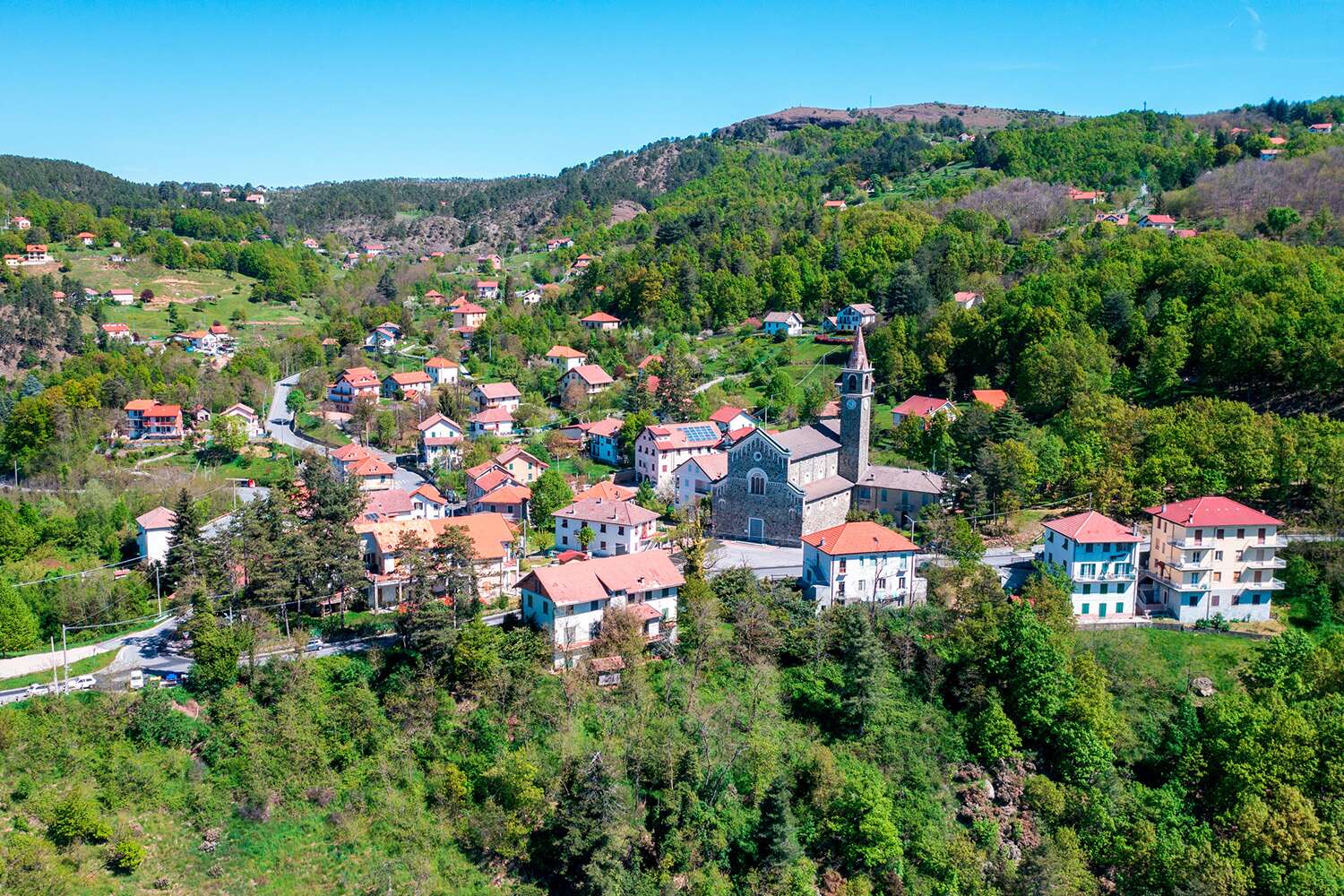Tiglieto, as the place name implies, is a large forest: chestnut, locust, maple, alder, hazel, linden, and oak trees form dense forests that cover the left side of the upper Orba valley. The southern offshoot of the territory reaches the Faiallo Pass, to the west the Turchino, to Beigua Park.
This was the site of the first settlement of Cistercian monks in Italy, founded in 1120 where a Benedictine monastery had stood before. St. Bernard stayed here and an important battle was fought in 1747 between the Austrians and Genoese. As in other places, the presence of the monks gave impetus to agricultural and craft activities.






What to see in Tiglieto
- BADIA DI TIGLIETO
- DECORAZIONI INTERNE
- STRUTTURA INTERNA E DINTORNI
- PONTE E QUERCIA DI NAPOLEONE
- ANELLO ESCURSIONISTICO
The Abbey of Santa Maria della Croce, more commonly known as the Abbey of Tiglieto, was founded on October 18, 1120 by a community of monks from the French locality of La Fertè. From the documentation found, it could be deduced that among the main founders and financiers was Anselm del Bosco. The first monks were led by Abbot Peter who founded and led the Abbey. The reference to Mary and the Cross connects with some of the main elements of the Cistercian order, as do the architectural features.
The Cistercians, called white monks because of the color of their habit, based their way of life on distancing themselves from the world, manual labor, prayer and spirituality as stipulated in the Rule of St. Benedict. The order was recognized and approved by Pope Calixtus III in 1119, with the condition that the monks be economically self-sufficient. Among the abbots of the Badia was Gerardo Da Sessa, sometime between 1203 and 1210, a future cardinal and archbishop of Milan.
In 1635, the Badia was entrusted to Cardinal Lorenzo Raggi. During the tenure of the Raggi family, the building underwent major transformations, including moving the convent to the upper floor and converting it into a dwelling, replacing the wooden truss roof of the nave with a barrel vault, and with cross vaults in the side aisles.
Two of the most striking rooms in the complex are the “Armarium” and “Capitular” rooms, the ceiling of which is supported by imposing columns characterized by octagonal capitals. Most of the interior furnishings have been moved to the Parish Church of St. Bernard and St. Mary of the Assumption in Casavecchia, including the two ancient wooden confessionals, two shell-shaped holy water stoups supported by an angel’s head, and the three-lobed cross, which now stands beside the high altar, which bears a fleur-de-lis of Florence, suggesting a gift from the Medici family to the Raggi marquises.
The Abbey formed by the church and convent is surrounded by a picturesque landscape inhabited by many plane trees and century-old cedars. The original structure dating back to the Middle Ages has been completely overturned. The entrance is on the east side and consists of a doorway with jambs and arch made of black and white stone ashlars, probably from Genoa.
Not far from the Badia stands the five-arched bridge that crosses the Orba River. At one end of the bridge is an old oak called “Napoleon’s Oak,” which was declared a monumental tree by the then State Forestry Corps. The name comes from the engraving forming the letter “N” on the bark, evidence that Napoleon Bonaparte passed over the bridge.
Surrounding the Badia is a loop hiking route, ideal for walkers and cyclists. The route retraces the dense network of paths and mule tracks created in part by the monks. Along the trail it is possible to observe coniferous forests, clearings and chestnut orchards. Further on, one walks along the banks of the Orba River and can observe the picturesque gorges from elevated points. The trail ends with Napoleon’s Oak.
Lorem ipsum dolor sit amet, consectetur adipiscing elit. Ut elit tellus, luctus nec ullamcorper mattis, pulvinar dapibus leo.
Lorem ipsum dolor sit amet, consectetur adipiscing elit. Ut elit tellus, luctus nec ullamcorper mattis, pulvinar dapibus leo.
Lorem ipsum dolor sit amet, consectetur adipiscing elit. Ut elit tellus, luctus nec ullamcorper mattis, pulvinar dapibus leo.
















